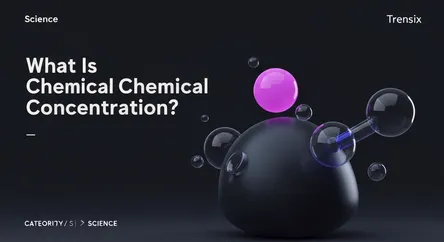Science
What Is Chemical Concentration?

A simple explainer on chemical concentration, detailing what it is, why it's a vital concept, and how it impacts our everyday lives.
What is it?
In chemistry, concentration refers to the amount of a substance, called the solute, that is dissolved in another substance, known as the solvent, to form a solution. It is a measure of the abundance of one component within a mixture. Concentration can be expressed in various ways, including molarity (moles of solute per liter of solution), molality (moles of solute per kilogram of solvent), and as a percentage by mass or volume. A high concentration means there is a large amount of solute in the solvent, while a low concentration indicates a small amount. This fundamental concept is crucial for quantifying the composition of mixtures.
Why is it trending?
While a foundational scientific principle rather than a fleeting trend, the concept of concentration is perpetually relevant in advancing fields. In environmental science, measuring the concentration of pollutants in air and water is critical for monitoring ecosystem health and human safety. In medicine and pharmacology, precise drug concentrations determine dosage and effectiveness. Furthermore, the food and beverage industry relies on controlling the concentration of ingredients like sugar and salt to ensure product consistency, taste, and safety for consumers.
How does it affect people?
Concentration impacts daily life in numerous ways. The effectiveness of cleaning products, the potency of a medication, and the nutritional value listed on a food label are all determined by concentration. For example, the alcohol by volume (ABV) on a beer or wine bottle is a measure of ethanol concentration. Similarly, doctors prescribe medicines based on the concentration of the active ingredient needed to treat an illness safely. Even the simple act of sweetening tea involves adjusting the concentration of sugar to taste, showing how this scientific principle is a part of everyday routines.